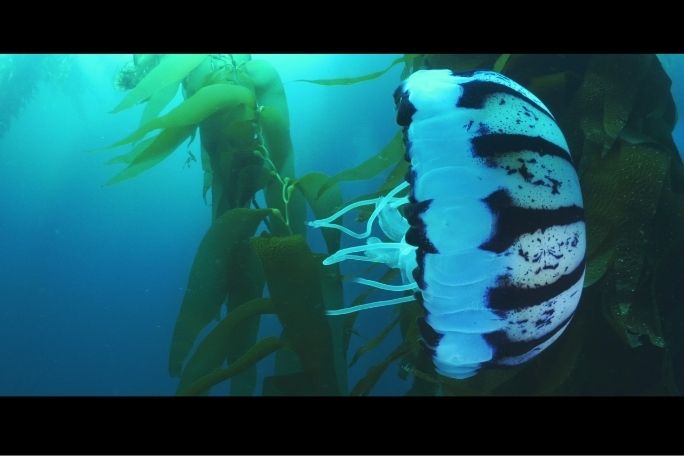Lesson summary
In this lesson, students will access information about seaweed farming and greenhouse gas emissions and use percentages, ratios, and fractions to solve problems. Students will also investigate the relationship between seaweed farming, the health benefits of eating seaweed and climate change. They will then use this information to develop an infographic that uses numbers to convince their peers to eat more seaweed.
Learning intentions:
Students will...
- understand what fractions, decimals and percentages are
- understand simple ratios
- learn how seaweed farming can help reduce CO2 emissions and therefore help combat climate change
- understand the relationship between seaweed farming, the health benefits of eating seaweed and climate change
Success criteria:
Students can...
- solve connect fractions, decimals and percentages and carry out simple conversions
- find percentages of quantities and express one quantity as a percentage of another, with and without digital technologies
- recognise and solve problems involving simple ratios
- develop an infographic that uses numbers to convince peers to eat more seaweed
Lesson guides and printables
Lesson details
Curriculum mapping
- Time required: 150 mins
- Level of teacher scaffolding: Medium – facilitate class discussion, support students in understanding climate change terminology, facilitate collaborative learning, guide students in developing an appropriate infographic
To view our Australian Curriculum alignment, click here.
To view our NZ Curriculum alignment, click here.
Resources required
- Student Worksheets – one copy per student
- Device capable of presenting a video to the class
- Devices capable of producing infographics
- Printer access (optional)
- Poster paper OR liquid chalk and a large window
- Sticky notes
- Seaweed articles – 5 sets of the 5 articles
Additional info
2040 is an innovative feature documentary that looks to the future, but is vitally important NOW! Director Damon Gameau embarks on a journey to explore what the future could look like by the year 2040 if we simply embraced the best solutions already available to us to improve our planet and shifted them rapidly into the mainstream.
In Australia: Order the Schools Version of the 2040 DVD. The Schools Version includes an educational license and is for Australian primary and secondary schools that wish to utilise the film as a learning tool or host free on-site screenings for the school community.
In New Zealand: Order the Schools Version of the 2040 DVD. The Schools Version includes an educational license and is for New Zealand primary and secondary schools that wish to utilise the film as a learning tool or host free on-site screenings for the school community.
If you are teaching in either New Zealand or Australia, you can now organise a virtual screening of the film for your class. To enquire about this option, simply email schools@whatsyour2040.com and the 2040 team will help you set this up! If you have already bought a DVD of the film and you have a ClickView account, you can email the team for permission to upload the film to your account to make it more easily accessible for your teachers and students.
Cool.org, GoodThing Productions and Regen Pictures would like to acknowledge the generous contributions of Good Pitch Australia, Shark Island Institute, Documentary Australia Foundation, The Caledonia Foundation and our philanthropic partners in the development of these teaching resources.


Welcome back!
Don't have an account yet?
Log in with:
By signing up to Cool.org you consent and agree to Cool's privacy policy to
store, manage and process your personal information. To read more, please see
our privacy policy here(Opens in new tab).
Create your free Cool.org account.
Many of our resources are free, with an option to upgrade to Cool+ for premium content.
Already have an account?
Sign up with:
By signing up to Cool.org you consent and agree to Cool's privacy policy to
store, manage and process your personal information. To read more, please see
our privacy policy here(Opens in new tab).